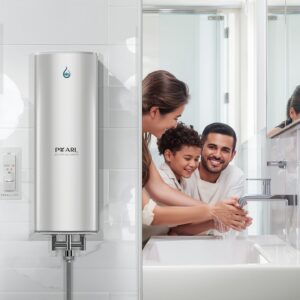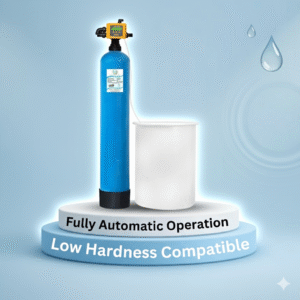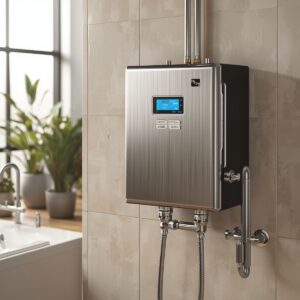TDS Meter – Complete Guide by Pearl Water Technologies
Outline
Introduction to TDS Meter
What Does TDS Mean?
Why is TDS Important in Water?
How a TDS Meter Works
Different Types of TDS Meters
Digital TDS Meter
Pen-type TDS Meter
Inline TDS Meter
TDS Meter by Pearl Water Technologies
Key Features of a Good TDS Meter
Applications of TDS Meter
Domestic water testing
RO systems monitoring
Industrial use
Benefits of Using TDS Meter
Ideal TDS Levels for Drinking Water
How to Use a TDS Meter Effectively
Common Mistakes to Avoid
Maintenance & Calibration
Buying Guide – Things to Consider Before Purchasing
Customer Experience & Reviews
Conclusion
FAQs
Introduction to TDS Meter
When you drink water, you want it pure, clean, and safe. That’s where a TDS meter comes in handy. It measures the Total Dissolved Solids (TDS) in your water, giving you a quick way to check purity. Whether you’re using an RO purifier at home or managing an industrial water system, a TDS meter ensures the water meets safety standards.
What Does TDS Mean?
TDS refers to the concentration of minerals, salts, and organic matter dissolved in water. While some minerals like calcium and magnesium are healthy, excess dissolved solids can make water taste salty, bitter, or unsafe.
Why is TDS Important in Water?
High TDS may affect the taste and even damage appliances like kettles and water heaters. On the other hand, extremely low TDS may strip water of essential minerals. A balance is key, and that’s why measuring TDS is so important.
How a TDS Meter Works
A TDS meter measures the electrical conductivity of water. Since dissolved solids increase conductivity, the device gives you a direct reading of TDS in parts per million (PPM).
Different Types of TDS Meters
Digital TDS Meter – Accurate and easy to read.
Pen-type TDS Meter – Portable and budget-friendly.
Inline TDS Meter – Installed in RO systems for continuous monitoring.
TDS Meter by Pearl Water Technologies
Pearl Water Technologies offers high-quality digital and inline TDS meters for both home and industrial use. Their devices are known for accuracy, durability, and affordability.
Key Features of a Good TDS Meter
High accuracy readings
Portable and user-friendly design
Long battery life
Auto-off function
Easy calibration
Applications of TDS Meter
Domestic Use – Check drinking water quality.
RO Systems – Monitor performance of filters and membranes.
Industrial Applications – Essential in labs, aquariums, and food processing units.
Benefits of Using TDS Meter
Ensures safe drinking water
Helps maintain RO systems
Prevents health risks due to high TDS
Saves cost on unnecessary filter changes
Ideal TDS Levels for Drinking Water
Below 50 PPM – Very low, may lack essential minerals.
50–150 PPM – Ideal for drinking water.
150–300 PPM – Acceptable, safe for most households.
Above 500 PPM – Not recommended for consumption.
How to Use a TDS Meter Effectively
Remove the cap and turn on the device.
Dip it into a water sample.
Wait for a few seconds for the reading to stabilize.
Note the TDS value in PPM.
Common Mistakes to Avoid
Not rinsing the probe before testing.
Measuring in hot water.
Ignoring calibration needs.
Maintenance & Calibration
Clean the probe after use, store it properly, and calibrate it occasionally for best results.
Buying Guide – Things to Consider Before Purchasing
Accuracy level
Portability
Budget
Brand reputation
Warranty and support
Customer Experience & Reviews
Users appreciate Pearl Water Technologies’ TDS meters for their precise readings, ease of use, and long life. Both households and industries trust their products for water quality monitoring.
Conclusion
A TDS meter is a must-have tool for anyone serious about water quality. Pearl Water Technologies provides reliable devices that ensure you always have safe, clean, and healthy water at your fingertips.
FAQs
Q1. What is a good TDS level for drinking water?
Ideally, between 50–150 PPM is best for drinking.
Q2. Can I use a TDS meter for hot water?
No, always test water at room temperature.
Q3. How often should I check TDS in my RO system?
At least once a month to ensure filters and membranes are working properly.
Q4. Do TDS meters measure bacteria?
No, they only measure dissolved solids, not microorganisms.
Q5. Which TDS meter is best for home use?
A digital pen-type TDS meter from Pearl Water Technologies is perfect for households.


